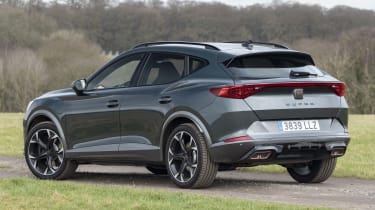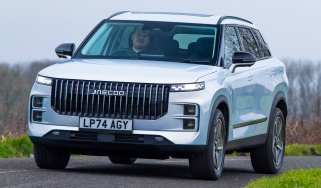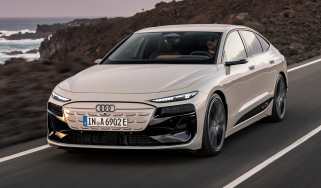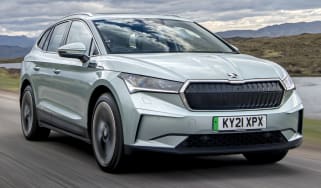Cupra Formentor e-Hybrid review
The Cupra Formentor will be very appealing to company-car drivers in plug-in hybrid form, but the powertrain doesn’t quite match the sporty styling
Pros
- Good to drive
- Well equipped
- Spacious and practical
Cons
- Powertrain not exciting
- Not as sporty as it looks
- Infotainment interface not the best
| Model | Electric range | Fuel economy | CO2 emissions |
|---|---|---|---|
| e-Hybrid 204 | 37 miles | 235mpg | 27g/km |
| e-Hybrid 245 | 34 miles | 188mpg | 33g/km |
As opposed to the tuned-up versions of the SEAT Leon and SEAT Ateca that Cupra has sold until now, the Formentor is the brand’s first standalone model. It’s available with plug-in hybrid power alongside conventional petrol engine options.
There are two plug-in hybrid powertrain options for the Cupra, but both use a 1.4-litre four-cylinder petrol engine paired with an electric motor to power the front wheels. The higher-spec VZ1 and VZ2 models produce a combined 242bhp and 250Nm of torque, while the V1 and V2 make do with 201bhp. They're essentially the same drivetrains as you'll find under the bonnet of the model like Audi Q3, Volkswagen Golf GTE, Volkswagen Tiguan, SEAT Tarraco and Skoda Octavia vRS, so they're well proven.
Also under the stylish bodywork is a 12.8kWh battery, which means you can travel for up to 37 miles on electric power alone in the V1 and V2 models, or 34 if you opt for the higher power output. The higher-spec plug-in hybrid Formentors also produce 33kg/km of CO2 compared to 27kg/km for the 201bhp version, as well as returning 188mpg rather than the 235mpg you’ll get from the V1 or V2 models.
That's why these Formentors fall into the 11% Benefit-in-Kind (BiK) company-car tax band in 2021/22, rising to 12% the year after. But, as with all plug-in hybrids, achieving those figures in the real world depends entirely on how often you plug it in. Do so at a typical home wallbox charger, and the car should take around three hours and 40 minutes to fully replenish.
The styling department is certainly where the Formentor stands out. With sharp lines, raised stance and interesting details such as LED headlights and bulging rear wheelarches, it certainly stands out, even in the crowded SUV market.
Yet the Cupra doesn’t feel as exciting to drive as it looks. The engine is a big part of this, as it sounds strained. You can choose a 'Cupra' driving mode that adds synthesised engine sound to the cabin, but it also adds unnecessary weight to the steering. The driving modes do tweak the suspension, though, and the Formentor corners with more composure in this sporty mode. All in all, it's pretty good to drive, as it has plenty of grip. The Cupra isn’t uncomfortable, either, as the suspension provides enough damping despite the slightly firm setup. Even on larger wheels it deals with bumps reasonably well, especially in the more relaxed driving modes.
Alas, the boot isn’t that big for an SUV, at 345 litres – less than you get in the Audi Q3 or BMW X1 plug-ins, which are among the Formentor’s main rivals. However, there is a good amount of space inside for passengers, and the Formentor has some distinctive interior details, including copper-coloured stitching and sports seats, plus digital dials and a large 12-inch infotainment screen. Sadly, the interface isn’t the best, as it takes too many clicks to get where you want to go, but at least there’s Apple CarPlay and Android Auto smartphone connectivity.
Overall, the Formentor is a successful first standalone car for the fledgling Cupra brand, as it’s stylish, practical, good to drive and pretty comfortable. The interior is smart and full of technology, and company-car buyers will love the hybrid models – although we’re not sure they quite live up to their looks, as the engine isn’t very exciting. For a more detailed look at the Cupra Formentor hybrids, read on for the rest of our in-depth review...




